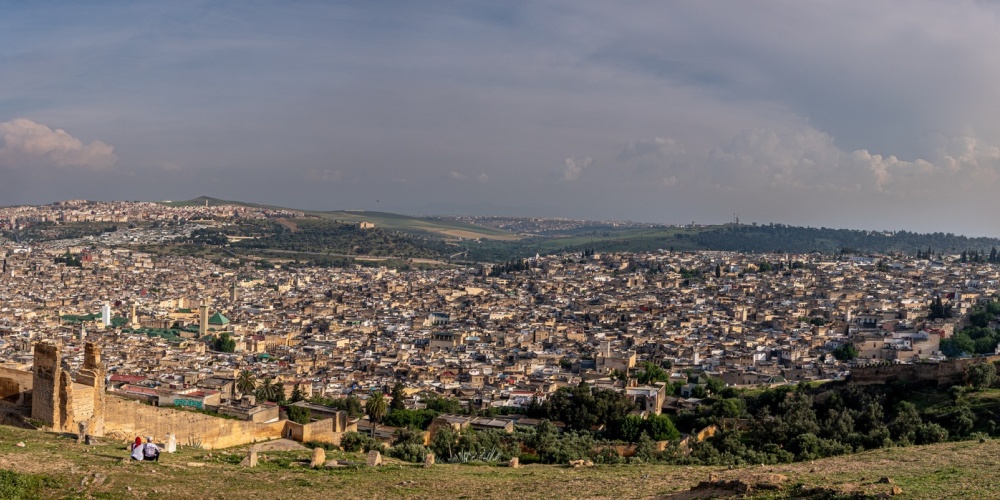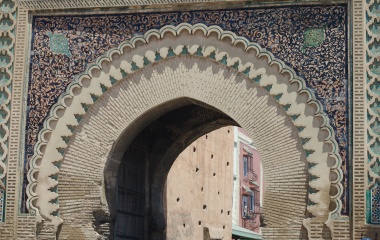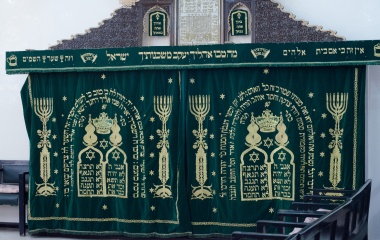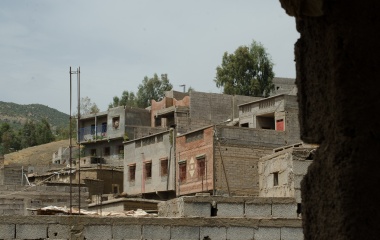
Outside of the world of the yeshiva, it’s a safe bet to assume that most who study Talmud do so as part of the Daf Yomi cycle. This innovation of Rav Meir Shapiro was special not only because Jews around the world study the same page of Talmud every day, but because Jews around the world would study Talmud at all.
For most of our post-Talmudic history, only a select few studied Gemara. For much of that time, those Jews who were learned studied the 11th century commentary of the Rif. He was the first to distil the Talmud into its halachic conclusions, ignoring the winding, discursive and oftentimes difficult to follow shakla v’traya, give and take, of the Gemara. No edition of the Talmud is printed without his commentary, and the fact that other commentators—including such luminaries as the Ba’al Hamaor, the Ra’avad and the Ramban—wrote commentaries on the Rif attest to its enduring importance. The Rif was one of the pillars on which Rav Yosef Karo based his Shulchan Aruch.
The “Rif” is an acronym for Rav Yitzchak Alfasi, his “last name” given to him for the city in which he lived, which was Fez, Morocco.
The Rif is not the only outstanding rabbinic figure to have resided in Fez. It is well known that the Rambam was born in Spain and spent the majority of his career in Egypt. Somewhat less well known is that the Rambam spent five years in Fez, and it was in Fez that he studied medicine, began his commentary on the Mishna and apparently wrote much of his commentary on the Talmud. He writes that by the time he left Fez—at the ripe old age of 27—he had completed two-thirds of his commentary on the Talmud. Sadly, his commentary has not survived, though the thought that—in addition to everything else that he did—he also wrote such a commentary is mindboggling[1].
The Rambam’s family fled Spain in 1148 due to the fanatical Almohadi Muslims, who gave the Jews of Cordoba a choice to convert, leave or be killed. Facing a choice between conversion and death, one would be allowed—and hence, would be obligated[2]—to outwardly convert to Islam as Muslims, unlike Christians, worship the One G-d.
So explains the Rambam in his Iggeret Hashemad, written when he lived in Fez, to counter the claim that one must choose death over conversion. Thereby, he encouraged those who had outwardly converted to Islam to remain faithful to Jewish teaching.
Scholars actually debate if the Rambam himself lived openly as a Jew in Fez or outwardly appeared as a Muslim, maintaining his Jewish beliefs and practices in private. It may have been his being “discovered” that led him to flee to Israel and then eventually make his way to Egypt.
The Rambam is the great rationalist of Judaism, and devoted great efforts to rid the masses of unacceptable beliefs and practices. He surely would not have been too pleased to read the tombstone of Rabbi Yehuda Ibn Attar, who served as the Av Beit Din in Fez at the beginning of the 18th century[3]. This rabbi is revered in Moroccan tradition as a great miracle worker. The Chida, Chaim Yosef Dovid Azulai, records that when the Jewish community could not afford to pay a ransom to redeem him[4], he was thrown into a lion’s den. When the guards retuned the next morning, they could not believe their eyes. Rabbi Yehuda was sitting and learning, with the lions sitting quietly next to him. His grave is a place of pilgrimage for many, and we met a number of them at the cemetery. The idea of pilgrimages to the graves of tzaddikim, where stories of miraculous acts are retold, later becomes a common feature of Chassidic life.
Buried nearby is “Solika Hatzadika”, who was murdered in 1834 for refusing to convert to Islam. As the story (legend?) is told, she was of stunning beauty and was wanted for marriage by the son of well-to do Muslim family. When she refused to convert—something the rabbis of the time (no doubt based on the Rambam discussed above) encouraged her to do—she was beheaded and her head carried around town.
There are many versions, both Jewish and Muslim, of this story, one that indicates the role of “myth” in the forming of communal identity. Every culture preserves stories— factual or otherwise—that are embellished over time but help to create a cultural and/or religious narrative, one more powerful than actual historical truth[5].
Moving to more modern times, in 1948 some 22,000 Jews lived in the mellah, the Jewish quarter of Fez. Today none do, though traces of the Jewish life that once was can still be seen, most notably in the Danan synagogue, which has been fully restored. Walk a few steps down by the side of the aron kodesh and one comes to the mikvah. Today, some 75 Jews live in the new city and they maintain a minyan every Shabbat. We had the zechut to daven mincha in this 120-year-old shul located outside of the Jewish quarter.
Not far from the Jewish quarter is the medinah, a shuk that dwarfs any in Israel. Visiting the leather “factory”, one fully appreciates the Talmudic ruling that a woman married to a tanner can demand a divorce from her husband, even if she had stated that she is marrying on full knowledge of his occupation. The smell truly is something that not all can bear. In keeping with traditional norms of society only men are allowed to work in the tanneries. This is due not only to the "scent" but due to most demanding physical labour required.
[1] It is the loss of his commentary that arguably is a major factor leading to the founding of the “Brisker Derech” of Talmud study. At its core, this system “converted” the Rambam’s halachic code into a Talmudic commentary. It is unlikely in the extreme that many of the interpretations given by the “Briskers” to the Rambam would agree with the Rambam’s own actual understanding. While modern literary theory teaches that an author’s interpretation of his own work is not definitive and open to debate, I find it unlikely that had these interpretations been known, the Brisker Derech could have gotten off the ground. I imagine not all will agree with this analysis.
[2] According to the Rambam, one who gives up his life rather than transgress a Torah law outside of the three cardinal sins of idolatry, adultery and murder is guilty of suicide. In a fascinating counterview, the Tosafists argue that while one is obligated to give up one’s life only for “the big three”, one may, and it is meritorious to, die for the sanctification of G-d’s name for all mitzvot of the Torah.
[3] He was a relative of Rabbi Chaim ibn Attar, who is better known as the author of the Torah commentary referred to as the Or Chaim Hakadosh.
[4] Arresting Jews on false charges (or none at all) was a common ploy to get money from the Jews, known to us most famously due to the “arrest” of Rabbi Meir of Rotenberg in 13th century Germany.
[5] This may be troubling for those who seek the whole truth and nothing but the truth, but the fact remains that for many, historical truth is not of great importance. One might rue that fact, but that does not mean that it is not the truth.



